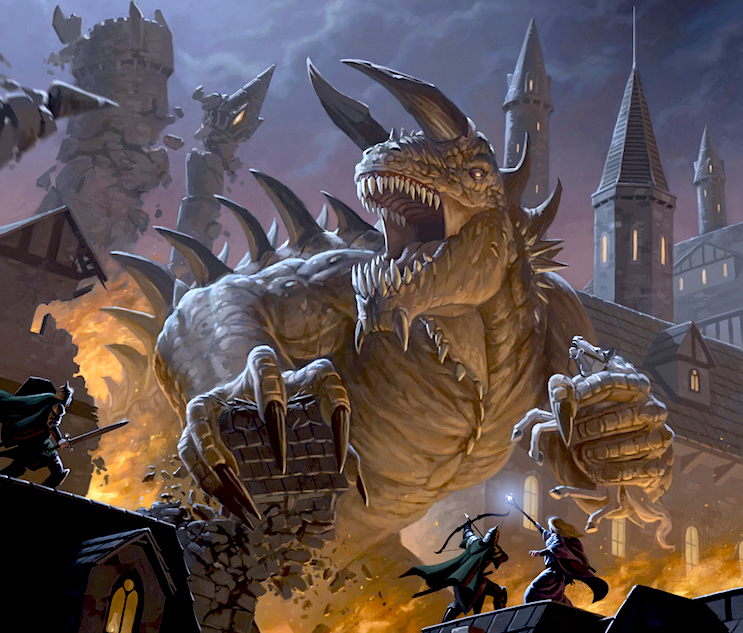Large Scale Thieves guilds
The thieves guilds are an integral part of the standard generic fantasy worlds in which D&D takes place. This is partly due to the inspiring fiction. That said, it is often portrayed as a local phenomenon. There is a local guild or two in the city, or maybe the bandits inhabit a particular forest. I am looking at you Sherwood.
World guilds, which is the term I am going with, are not quite so local. They have a broader reach but still remain secretive and unknown. This could be like La Cosa Nostra, or the Yakuza in the real world. They may have local affiliates, but they also are part of a broader underworld. I prefer the world described by John Wick, with the Continental in every city, but there are other examples.
Here are a few examples I came up with that you could drop into most campaign worlds.
The Shado Linar
The Shado Linar translates to the Family of Shadow. This group has existed since ancient times in the shadows throughout the world. It came about during a great war for survival against a dark power. It has persisted as a unifying force in thieves guild across many lands ever since. The Shado Linar claims to have noble guiding principles such as protect the weak from the strong and protect the commoner from the powerful. In practice, this is often just a thin pretext but, for the more traditionalist members, it often defines and constrains their actions.
The Shado Linar has local chapters around the world. There is no single leader to the Shado Linar. Instead, local guilds follow the same traditions, and occasionally form councils in times of need. The individual chapters can often be in conflict, but will follow traditional rules in their conflicts.
The local Guild head is called Aunt or Uncle. The Uncle/Aunt maintains the guilds relationships with other local groups. They are also responsible for finding talented amateurs and encourage their joining the guild. New recruits are called Nieces and Nephews. Long time members are Cousins. Members of another guild are often called distant Cousins.. The Aunt/Uncle also tend to be the keepers of the traditions. They are often responsible for the final test for membership. These tests are usually difficult trap filled houses, or picking the pocket of an important person without getting caught. Tests are also sometimes arranged to resolve disputes to avoid war in the streets.
The Shado Linar has a public facing advocate called Mensata. Mensata are sought out in disputes by members and nonmembers alike. They are generally sought out to resolve difficult matters but that advocacy often comes at a price. That price can be a favor, monetary reward, or something else entirely. The Mensata is sent to speak to all parties and the guild head to seek an accommodation, or a test of skill which will resolve the matter.
Traditions
Each Member of a local Shado Linar guild must leave a marker after a theft. This marker will have the symbol of their guild, and a symbol indicating who the thief is, if you know how to translate it. This is an attempt by the thieves in Shado Linar to show that they are just, in their own fashion. “Never take the last, or more than someone can afford” is the traditional rule and the marker is part of that.
To say that the guild is always fair and good to the common people would be an exaggeration. Many local Shado Linar guilds will operate protection rackets. Don’t pay up? Well then, you can probably afford to lose more. There are some members who do not leave markers, but not doing so can be grounds for a severe form of discipline. It has resulted in death of the offending thief, or worse.
If the victim of a robbery finds a marker, they can seek out recompense. Going to a Mensata or an Uncle looking for your stolen property can be a big risk. If it is found you can afford more than you lost, then you may well lose more. That said, once the marker is presented, the guild is obligated to provide a test. They could return the item if they feel it was taken in error but that is rare. If you pass the test you will get your stolen item, or be compensated for it. Don’t pass……well, material things are not really that important, right?
Design notes:
The Shado Linar was the product of the Dust to Dust larp which I helped write with Harbinger of Doom, Stands in the Fire, Kainenchen and others. One of my particular areas of interest was the thieves guilds and writing their traditions. Brandes said he wanted there to be a mechanism for PC’s to be able to try and get their stuff back if they got raided by thieves, which is where the tokens came from. The modern thieves guilds, and their traditions, were descended from the more ancient Shado Linar. A lot the choices made were to create thieves guilds for the rogue type pc’s to interact with. They were shady but not so terrible as to make you be a “bad guy” just to be a member. For what it is worth, I think the token and challenge thing works in a tabletop game context as well. It gives great adventure hook potential.
Gravediggers
The dead in a fantasy world really have a bit of a hard time. First, they are dead. That is certainly a bummer, but in the real world that at least means you are no longer have anything to worry about. In a fantasy world, you have hauntings, gods of undeath and a surprising number inconsiderate necromancers. Your troubles do not go away when you die.
Luckily, the Gravediggers are there for the recently deceased.
This guild is a much more informal affair than the Shado Linar. They do not have regimented ranks. There are no tests for membership. While there is an origin to the guild, no one seems to remember it. Throughout the world you can find the Gravediggers toiling away making sure that the dead stay undisturbed.
The Gravediggers do not have a group structure. Individual Gravediggers will take apprentices and train them in the ways. This training is not just in the thieving arts they use to protect tombs, but also how to slay undead. They also teach them Gravescript. That is a collection of marks left on tombs indicating where traps are, what tombs may attract unwanted adventurers and if there is a history of undead in the area.
Traditions
Gravediggers are an unlikely thieves guild. In many ways, they are the opposite of the standard guild as they are intent of preventing a crime, specifically grave robbing. They do not tend to collect in groups of more than a handful. Some take to the road, which is referred to as “Digging a Path.” They travel to points of conflict and war and see to the needs of the fallen. This allows them to learn new burial practices. The more practices a gravedigger knows the greater their prestige. By tradition, the only payment they take for the burials are as laborers. Sometimes, an event will come that attracts many Gravediggers in a region. This is called a Grave Moot. Grave Moots are truly a dread sign. Those who know of them know that it is a sign that the Gravediggers see their services being in high demand soon. A Moot can be called by any Gravedigger but is usually only called by the oldest and most experienced.
Design Notes:
This is obviously directly tied the Gravedigger archetype I already wrote up. Is this guild for every rogue? Nope. It does give a nice mix of adventure hook potential and possible adversaries depending on your group. Trying to rob a tomb protected by these guys can be rough. Or they might be who turns you toward the necromancer big bad operating in the area.
Strands of Fate
The dark cousin of a thieves guild is an assassins guild. Most thieves guilds pursue criminal endeavors, and may even kill someone if they need to. An assassins guild provides a single service to a discerning and somewhat demanding clientele. They reduce the life expectancy dramatically for coin. The Strands of Fate are the premier assassins guild. They have offices in most large cities. An office does not have a sign hanging out front which says “we kill people.” If you are the sort who occasionally needs to hire such services, you know the offices are disguised as a tailor’s shop.
The order is placed and sent to the Weavers for approval. The Weavers decide which contracts to take. They sometimes inform a noble that he will want to hire them for an assassination. This noble probably had previously not known someone needed to be killed, but who is he to argue with experts. Other times a contract can be declined. Only the Weavers know why. Only the Weavers can give the order. A member of the guild who performs unapproved services often finds they have a much shorter and remarkably unpleasant life.
The cost for an assassination is high, and the individual members of the guild end up quite wealthy. They often can afford the best gear. Once a contract has been accepted, it cannot be rescinded. The assassin will continue to attempt to assassinate the target till the either the target or the assassin is dead. If the Assassin fails another is sent to finish. An accepted contract is permanent and only ends with the death of the target even if the whole guild has to become involved. That said, it rarely involves more than one or possibly two members.
The preferred methods of assassination depend on the assassin. They are often assigned based on their specialties and the requirements of the job. Sometimes, the job is rather public and clearly an assasination. Other times, well…it is possible the king merely died of old age, right? The merchant who died from a common cold is not unheard of, right?
Traditions
The Strands of Fate carry a knotted thin cord. They add a knot for each person they kill. When orders come to assassinate a target, it is embroidered on a silk handkerchief. The Weavers are not field agents nor have they ever been. This is not known by people outside the guild. They are said to be oracles who see a potential future that each assassination brings closer. Another rumor has that they have the Tapestry of Fate in their possession and can see who should die in every thread. Whatever the case, their decisions are final in the guild and have an uncanny ability to know when someone has not followed orders.
Design Notes:
This is a mystery cult at its heart. Assassination, taking money to kill people, is ultimately an evil profession. There are not a lot of ways around that. The Assassins Creed games address this by framing assassination as being in service of a mysterious greater good. It allows the player to feel like a good guy while going about killing people. If you don’t have an assassin in your party, you can also use this group as a major plot complication. Why did the weavers take a contract on Lord Gimel? What do you do if they take a contract on your cleric?
The Shadow Court
Sometimes, theatrics are part of the game. You need to have style and flash. Sure, there is a place for the unseen and unknown anonymous cutpurse, but that is not for everyone. There are those for whom glory is the call, even in the shadows. The Shadow Court is for those people.
The Shadow Court has chapters in every city. They are not a terribly well-kept secret and anyone with some knowledge of an area has heard of them. They are certainly criminal and dangerous, but they do cultivate a romantic and mysterious charm. Each member has a faux noble title. When in the capacity of a member, they wear a mask to disguise their features. Real names are not to be used and illusions are often used to obscure their true identities.
This showmanship does not make them any less effective. The integration of magic into the guilds mythology is more than just show. The guild has many magicians in their employ and many members are spell thieves themselves. They use magic, skill, misdirection and a flair for the dramatic to take almost anything they choose.
The Shadow Court does try to avoid presenting a bad image so they rarely involve themselves in petty street crime and attacking the poor. Not that they have any moral qualms, just aesthetic ones. They are often approached by nobles to acquire hard to obtain objects from rivals, or ancient tombs. They trade in favors. A deal with the Shadow Court is kept always.
Tradition
The Shadow Court has a separate court for every city. The leader of the guild in a city is called the Prince or Princess. The court for a city has a particular color or theme. The court of one city might be the Purple court. Another might be the court of Thorns. The titles will share this theme. The guilds enforcer for the court of Thorns would be Lady Rose, Dame of Thorns. The quartermaster in the guild might be called the Bishop of Thorns, and so on.
There once was a King of the Shadow Court, hundreds of years ago. But the last one died long ago and no one has had the power and prestige to claim it again.
Becoming a member is sought out. There are some who join as legacy members. Their parents were members so now they are. Some join by proving their skill to the court and earning the place. The Shadow Court is popular among young rebellious nobles who fancy themselves as rogues, and some even survive trying to prove that they belong.
Design Notes:
In my head, these guys are based on comic book super villains. They are flashy, dangerous, and amoral for the most part. Maybe not the Joker, but certainly the Riddler or Captain Cold would be good examples. The game is the point. The showmanship is part of that game. If you have a rogue in your group who wants to be showy, this is their playground. If not, well this would be a good source for recurring adversaries.
Designing your own
The larger regional or world guilds give you a few things. First, you ave a consistent underworld you can keep going as your players travel. This invests your rogue type pc’s in each new city. It also allows you some story options that would not really carry over from a small local guild.
If you are going to design a guild, large or small, you want them to be memorable. This is true of any NPC element in your game world. Details and traditions make the world have a sense of reality, a sense of being a “secondary world” as professor Tolkien might put it.
Don’t just call it the “thieves guild.” Names are powerful. The Shadow Court says a lot about the group before you ever meet them. Also, give the group a theme or cultural touchstone to make it easy for you and your players to latch on to them. If you have a semi secretive group of criminals who rule the streets and all have ornate body tattoos, then you have a built in set of expectations and questions.




